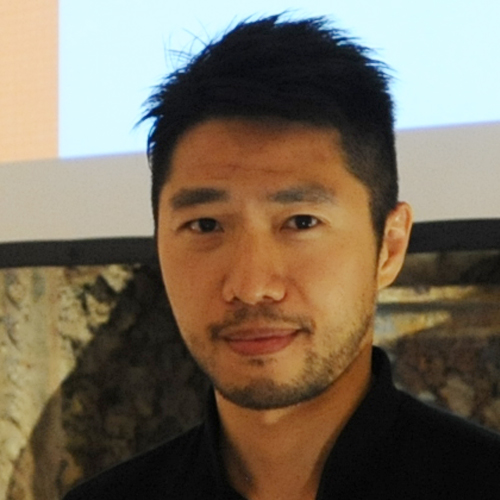
A dialogue with Arthur Huang
24 June 2016The Dialogues allows participants to meet with personalities from the world of business and culture that have achieved excellence in their respective fields. We spoke to Arthur Huang, CEO and founder of Miniwiz, a design and manufacturing company that uses recycled material as inspiration and raw material. He was a guest at the Innovation Talks Spring Edition.
Arthur Huang is the CEO and founder of Miniwiz, a company that designs and manufactures materials and design-projects from recycled material. This eclecticism is possible because Arthur is a structural engineer, an architect, an innovator in the field of materials creation and in general in the search for solutions combining functionality and care for design. Miniwiz has worked, among others, for Nike and Philip Morris.
We went from the concept of Recycling to the concept of Upcycling. What does it mean?
Recycling means collecting materials such as PET or glass bottles, used garments, various objects and re-using them in different contexts. Currently the aim is to dispose of them; finding a way to do it in the cheapest possible way, or with the possibility to earn something. Materials can be used as fuel by burning them, others can be used, for instance in the case of used garments, for charitable reasons based on the collection, storage and distribution in countries struggling with poverty. But the material intrinsic value is very low. While upcycling means transforming a depleted material into a new material that has a higher value as opposed to its previous version.
It’s a sort of “upgrade” of the original material.
If the upgrade occurs successfully with the creation of a higher quality product, it means that from the prototype you set up a production chain that includes job creation and new upcycling-based businesses. And all that on a large scale. India can do upcycling from the waste material of cotton production, China or Vietnam from rice production, the States from corn, Saudi Arabia from oil. An example is the jacket I’m wearing. The material it’s made of is produced from PET bottles, combined with high quality, Italian manufacture. In order to produce a material that is of a high quality, as for appearance and touch, original and creative engineering solutions are needed. The end of this upcycling process must be a high quality product from a poor material. With a large profit margin.
Is Miniwiz, your company, active in any specific field?
In the upcycling context, if you focus on a specific industrial area you’re history. And being eclectic depends on the materials used. Polyester for instance is suitable in different fields, like furnishing, apparel, automotive, the building sector and many others. Our aim is to discover how to transform waste material. That is, we offer engineering solutions to treat the material and design solutions to give shape to the product. We design machines for the upcycling.
You chose Bologna as the place where to propose and create your projects. Why?
It’s a very interesting place. We started from the US, where it couldn’t work because many manufacturing companies have left the Country. Then we went to China and finally Taiwan. And in Taiwan we found a very interesting production context, very similar to what you have in Bologna. Same mentality, a great deal of creativity and intelligence, prevalence of small and medium enterprises, often headed by capable families that can take decisions rapidly and, in a short time, start production chains. A flexible context, not rigid like in Germany, where we noticed that decision-making processes often derive from rules and are developed in a sequential way. For this reason, we’re building production lines right here, in businesses located in this area, in Bologna.
Perhaps your most famous project is the Philip Morris’ one.
It’s a project to combine together art, design, functionality with recycled material, at an unprecedented level. We invented a new plastic material and a system to purify cigarettes’ smoke. The objective was to create an environment with furnishing able to purify the cigarette’s air. So we designed and produced a material able to absorb smoke and release clean air. Anyone can see it in the Philip Morris stores in Bologna, Milan, Turin, Naples. We took great care also in designing the overall structure and each individual construction unit, starting from the “bricks” that reproduce the molecular structure of tobacco. Perfectly modular.
Any other innovation?
With Philip Morris we’re developing an art/innovation gallery that will showcase the innovations created by the Bologna-based company. In addition to this, we’re working to make the materials produced for our experimental projects available to consumers. We’re now looking into the packaging and machinery industry, still in the area of Bologna and we’re negotiating with four companies, I can’t disclose their brands though. But the new striking element for the media especially, is that Miniwiz combines, in a single solution, everything from the architectural project to the production of the construction material.
A piece of advice to future creative managers.
When you design, think about people. Build your innovative idea around them, don’t just develop increasingly advanced technology. Use the pace of breathing as a metronome of your creativity. Do networking, create in cooperation. If you want to invent something unique, the final value can’t ever be just money.
